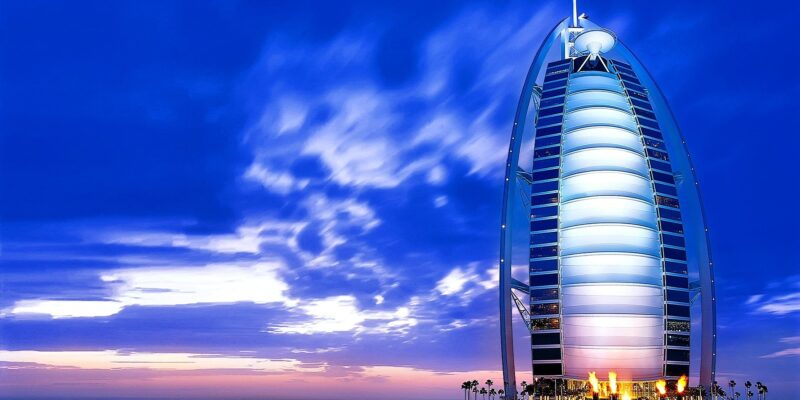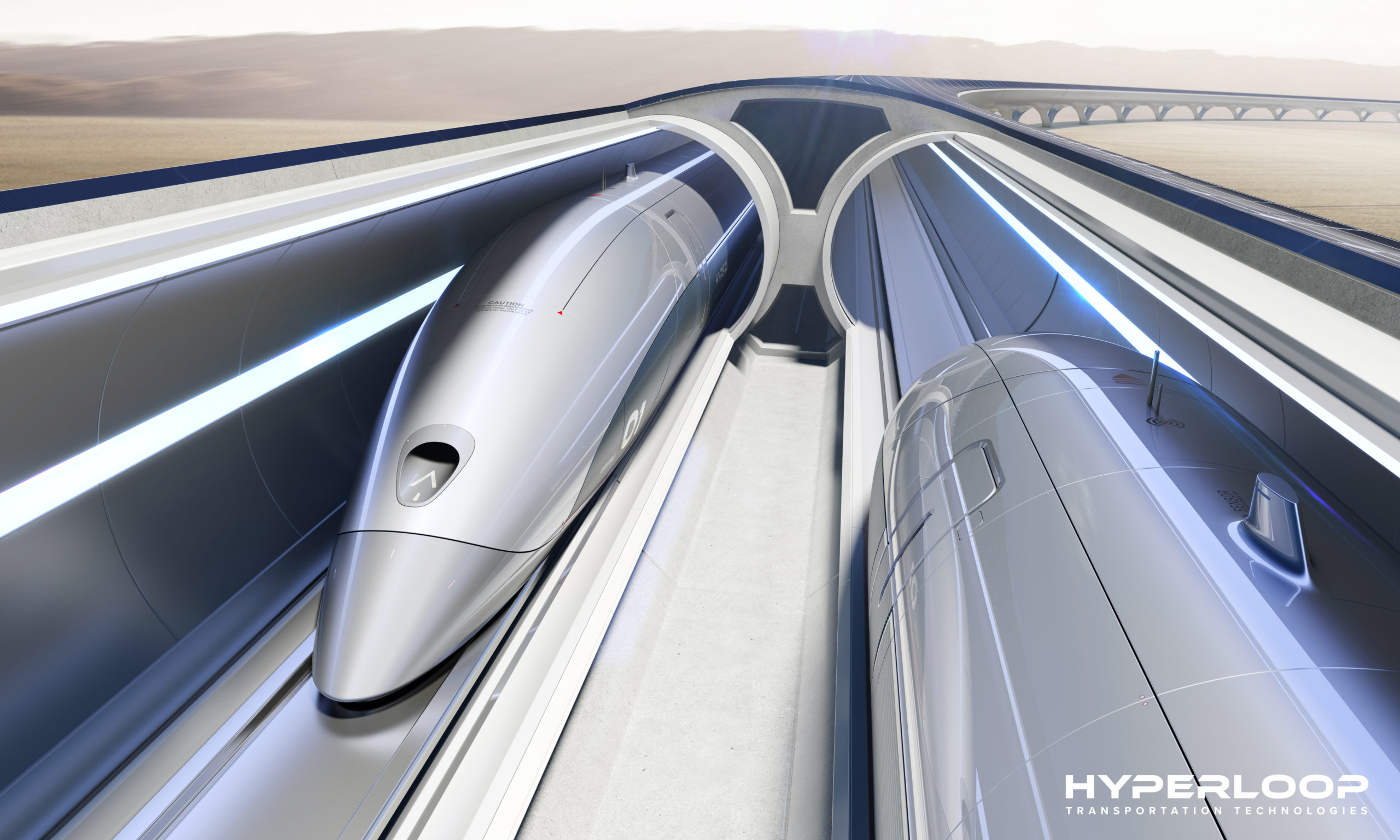The Burj Al-Arab
The Burj Al-Arab is the landmark of Dubai, as well as one of the most extraordinary works of civil engineering. The design and the realization of the Burj Al-Arab have given inspiration to the entire construction industry.
The current Prime Minister of the United Arab Emirates Mohammed bin Rashid Āl Maktūm commissioned the building in 1993 to the architect Tom Wright, who was helped by engineers Anthony McCarter and Mike McNichols.
A new island on the sea
Wright suggested that they located the structure on an artificial island and the idea was immediately accepted by the sheikh. The structure, made of blocks of rock available in the proximity of the site, would have created an island very visible above the sea level, because it would have had to face mighty swells.
However, Wright had designed a building resembling a sail, and decided on a much smaller height for the island. To solve this problem the engineer Mike McNichols designed special holed blocks of reinforced concrete that would have enabled the limitation of the power of the waves.
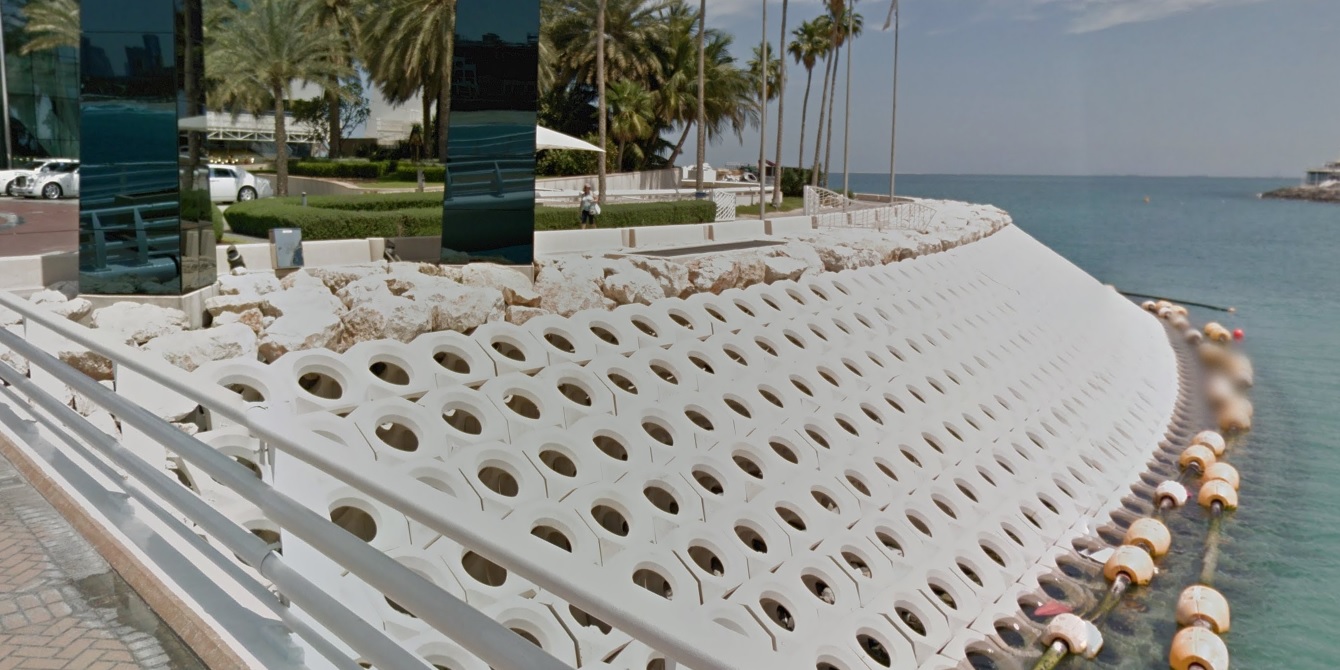

When hit by the waves, these blocks create inside whirlpools, dissipating the energy of the wave. The blocks were tested in scale with waves having a return time of 100 years and they were placed on the island’s perimeter.
The foundations
One of the main problems was the design of the foundations. An excavation was conducted to lay the foundations, and a great superstructure was designed to avoid the danger of the “cork effect”. Eventually they decided to use 230 drilled poles, that would have supported the structure only with the contribution of the lateral resistance of the calcified sand that surrounded them.
Down to a depth of 180 meters there was in fact no solid rock. During the execution phase the poles were lengthened by 20% to have an ulterior safety margin against the strong winds, that in those areas can reach 150 km/h!
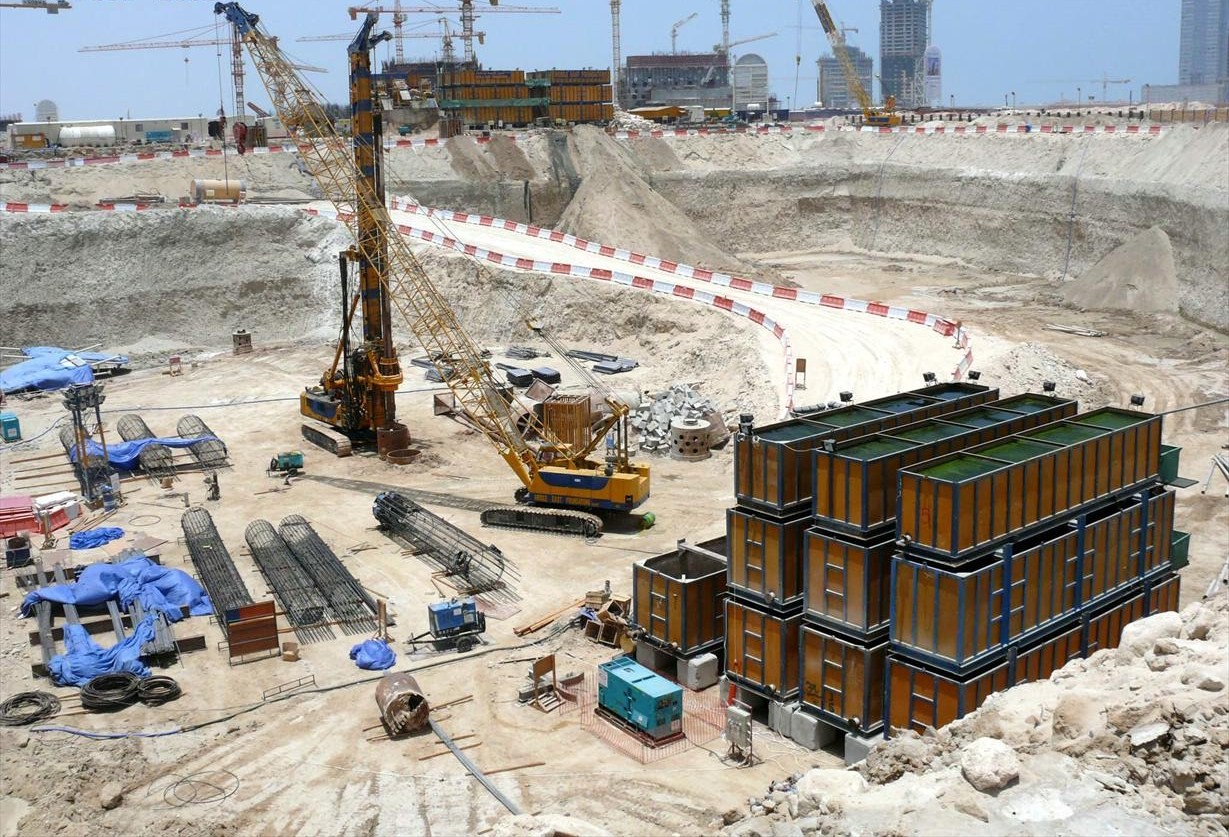

A world famous structure
The shape of the building has now become the symbol of Dubai, a simple outline resembling a sail inflated by the wind. Nevertheless, simple and elegant shapes often hide elaborate structural problems.
The building has a reinforced concrete core, but the walls and the core that jointly form the central structure, can not respond efficiently to the action of winds and earthquakes.
For this purpose they designed a steel exoskeleton, made of two archs attached to the core by diagonals, that form the reticular structures that are very resistant to horizontal actions.
One of the biggest problems during the construction was the implementation of the large steel diagonals. The weather in Dubai could have caused a thermal expansion of the diagonal of up to 5 cm.
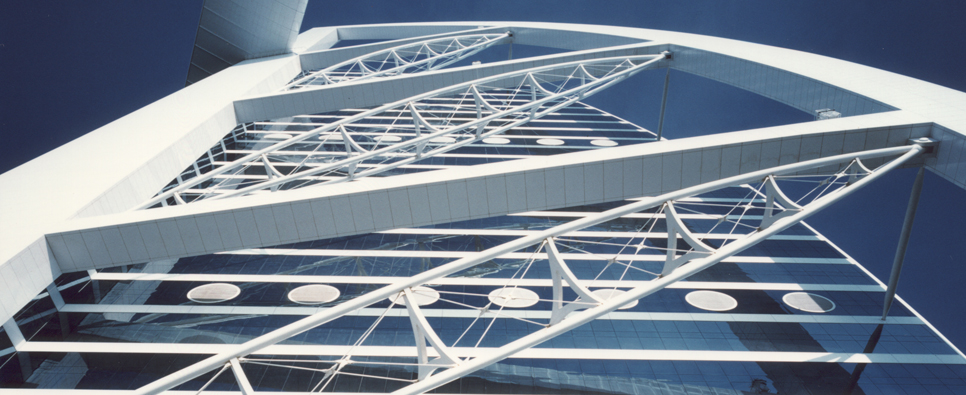

The solution to the problem was the use of a special washer, capable of rotating to ensure the necessary resistance. The diagonals were then secured with a hinge with a diameter of 30 cm.
The structure was also studied in the wind tunnel, because the thin outlines of the steel archs presented the problem of vibrations, due to the phenomenon of vortex detachment. The solution was found by the engineer Anthony McCarter, who decided to install 11 dampers in the critical points of the exoskeleton. When the outline started vibrating because of the wind, these would put in motion a mass that, namely, “damped” the vibrations.
A restaurant in the sky
Another marvel of this design is the location of one of the three restaurants in the building. It sticks out of the main structure by 27 meters! To make this possible, supports were installed inside the core, to which the steel beams, that join the restaurant and the main structure, were then attached.
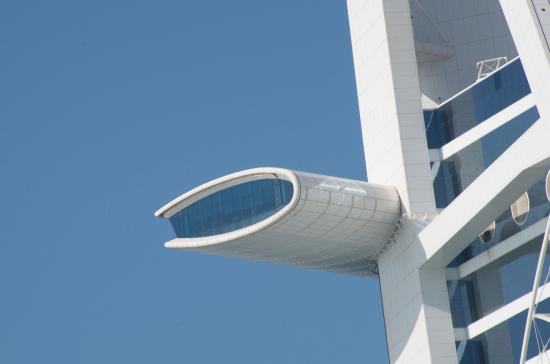

The restaurant is a large reticular steel structure with a C outline, framed by glass walls. It is situated 200 meters above sea level, and it surely is really suggestive.
To the present day the Burj Al-Arab is one of the most luxurious hotels in the world, and certainly one of the most interesting from a structural point of view.

